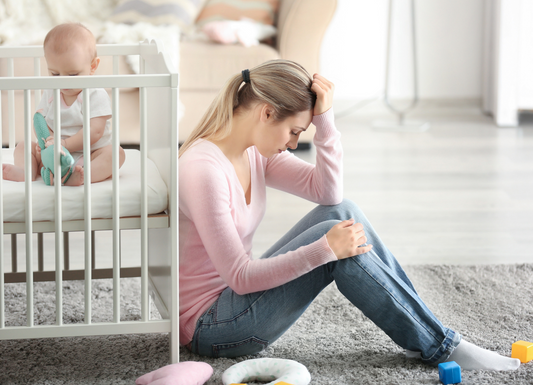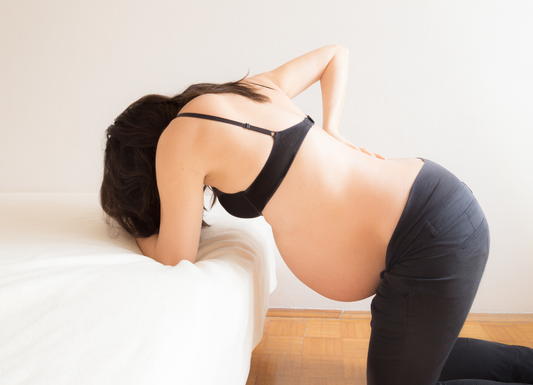Not to state the obvious, but pregnancy and childbirth can really change a woman’s body. Doing things to proactively manage the health of your pelvic floor during your child-rearing years is so important for your long-term pelvic health and overall wellbeing.
In this interview, we talk to Anna Scammell from The Whole Mother in Sydney about one of the most common pelvic health issues faced by women during and after childbirth- overactive pelvic floor. We cover what it is, what causes it and what you can do about it.
If you’re pregnant for the first time (or even the second or third time), or you have young kids, this interview is for you.
Em: What is an overactive pelvic floor?
Anna: An overactive pelvic floor refers to increased tone (meaning tension and tightness) in the pelvic floor muscles.
So, rather than being in a relaxed position at rest, where muscles are designed to be, they are contracted to some degree.
As a result, the muscles don’t work as well as they should and this can lead to pain, or bladder/bowel/sexual dysfunction.
Em: Why might someone develop an overactive pelvic floor after birth?
Anna: Women can develop pelvic floor overactivity after a traumatic birth, or a birth involving interventions (for example, forceps delivery), an episiotomy (cut of the perineal muscles) or perineal tear.
Overactivity can develop as a conscious or subconscious protective reaction of the pelvic floor muscles in response to this pain or trauma.
We find that both physical and psychological manifestations of trauma and pain can contribute to the development of pelvic floor overactivity. As a result, stress, anxiety and sleep deprivation typically worsen things.
Em: Can this happen to women who have had a c-section delivery as well?
Anna: Yes – the pelvic floor is closely linked to the deep abdominal muscles. So if a woman is holding tension in her abdominal muscles due to pain following a c-section, she can also hold tension in her pelvic floor muscles, which can lead to overactivity.
Em: Can women have an overactive pelvic floor before childbirth?
Anna: Absolutely! And if it’s left untreated, the vaginal canal may not be able to stretch enough to accommodate their baby’s head. If this impedes the baby’s ability to descend down the birth canal, an emergency c-section may be necessary.
This is why I highly recommend every pregnant woman has an assessment with a Women’s Health and Pelvic Floor Physiotherapist to assess her pelvic floor muscles and treat any overactivity before labour.
Em: What sort of signs or symptoms would women experience if they have an overactive pelvic floor post-birth?
Anna: Commonly, women will experience pain when they try to have intercourse after childbirth.
This can be due to several factors – pelvic floor overactivity, the development of scar tissue, trigger points in the muscles and increased sensitivity of the area.
It’s really important that women don’t push through this pain and force themselves to have sex, as this will only make the issue worse. Similarly, ignoring the issue and not doing anything about it (except avoiding sex) is not the answer either. At the first sign of pain or any abnormal sensation, women need to seek help from a Women’s Health Physio. The longer the issues are left, the worse they get and the longer recovery takes.
Other signs of pelvic floor overactivity can be stress incontinence (leakage with cough, sneezing or jumping), incomplete bladder emptying or bowel issues.
Em: Do you have any recommendations you give to women for the first few days immediately post-birth to optimise their recovery?
Anna: There’s a lot going on for women immediately after they have a baby (hello new human life!), but it’s still really important that they look after themselves, and don’t disconnect or ignore their downstairs area.
If they’ve had an episiotomy or perineal tear then I recommend icing the area for 48 hours after birth, using compressive/supportive underwear and prioritise rest (lying down).
They also need to avoid straining to use their bowels, so must drink 3L of fluid a day, eat plenty of veggies and take a laxative if they are prone to constipation.
Ideally, women should start to do gentle pelvic floor contractions the day after they give birth. This helps to reduce swelling and re-activate the neural pathways to the muscles. 5 pelvic floor contractions per day is optimal in the first few days, being mindful of lifting the muscles and then completely releasing them. Taking deep belly breaths between each contraction can help to achieve complete pelvic floor relaxation. To learn how to correctly exercise your pelvic floor muscles, I created a free guide you can access here.
Em: I know in France it is standard for women to leave the hospital with a prescription for 10 pelvic floor rehabilitation centres paid for by the government- how fantastic is that!? Unfortunately, women in Australia and New Zealand do not have this.
Why is it so important to get an assessment after giving birth?
Anna: It’s a crying shame that this isn’t offered in Australia!
A pelvic floor assessment post-birth is imperative! It is the first step to preventing pelvic floor dysfunction (prolapse, leakage, painful intercourse) in the postpartum period and later in life (especially during menopause).
The assessment is important for several reasons- to ascertain if there is any overactivity in the muscles; to assess if there is a prolapse or incontinence; and check pelvic floor technique, strength, endurance, motor control and set the woman up with an exercise program specific to the findings.
Em: And when do you recommend women come in to see you?
Anna: I actually recommend women first come to see me during the second trimester of their pregnancy!
Because the sooner they have an awareness and understanding of their pelvic floor muscles and can perform pelvic floor exercises correctly, the better.
Post-birth I recommend women see me at around 4-6 weeks postpartum. We do not carry out internal examinations until after their 6-week check up with their Obstetrician or GP.
Oh and ladies – you do not need a referral to see women’s health physios so can book straight in!



